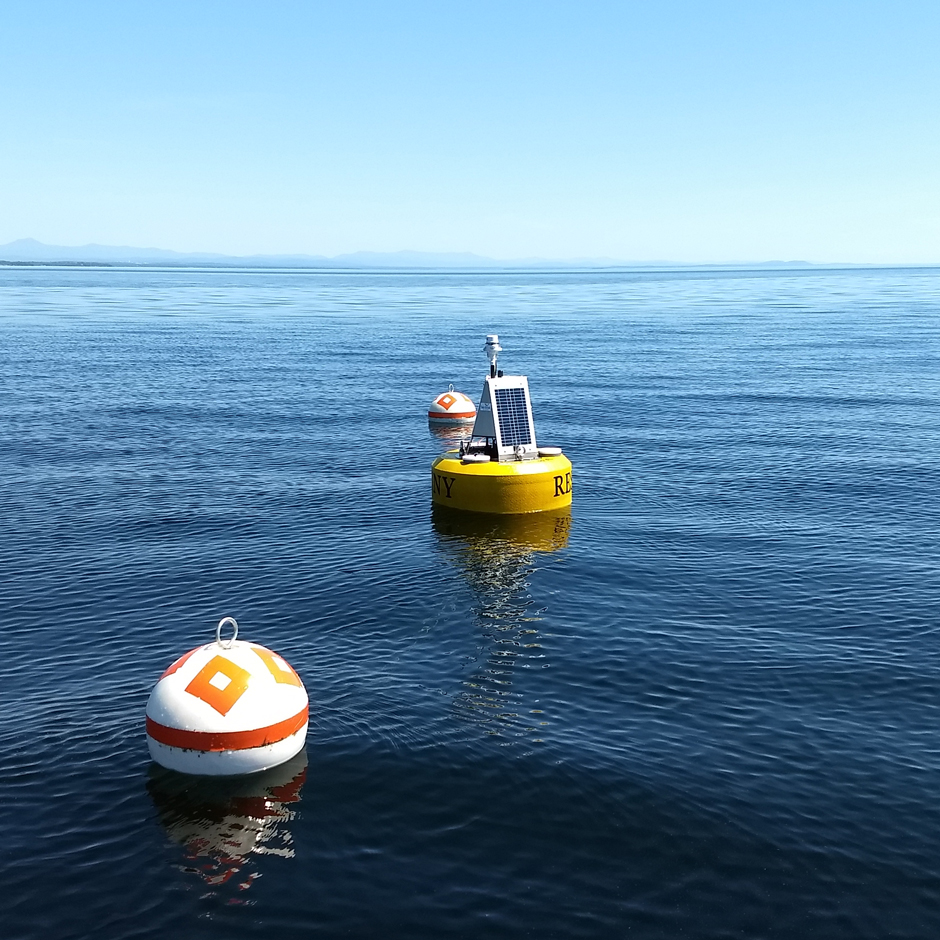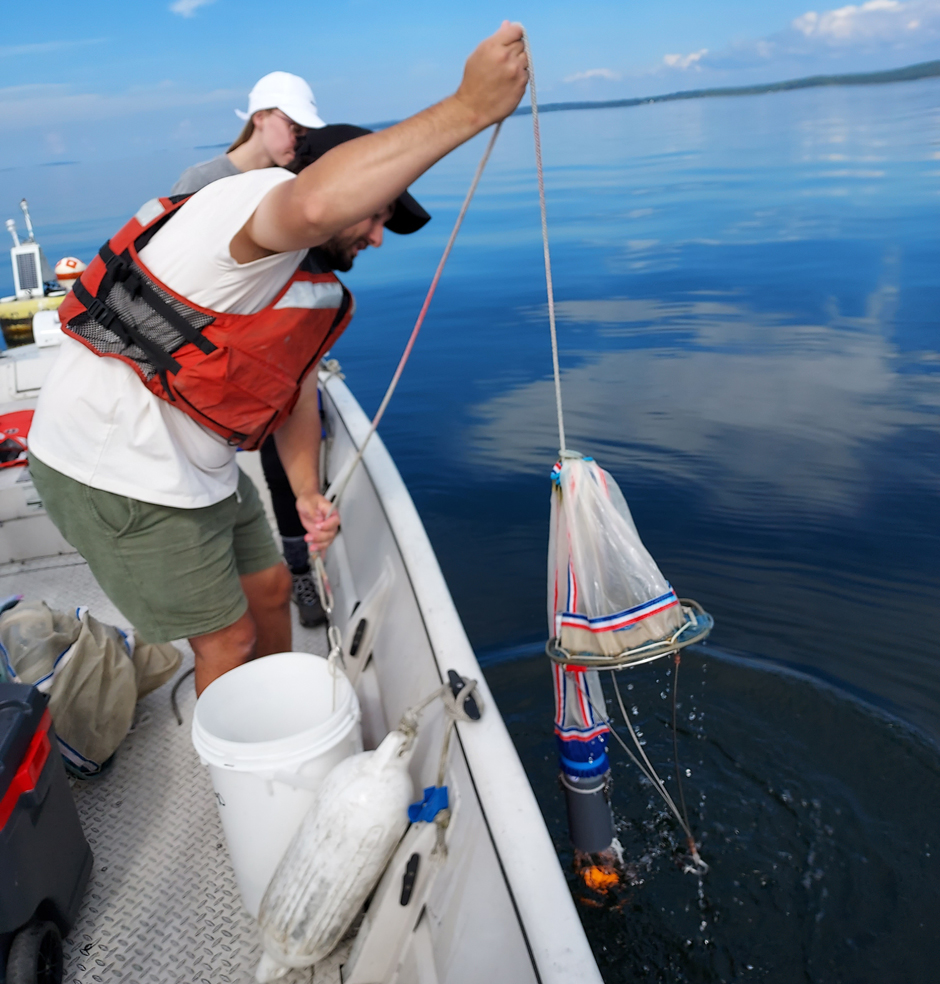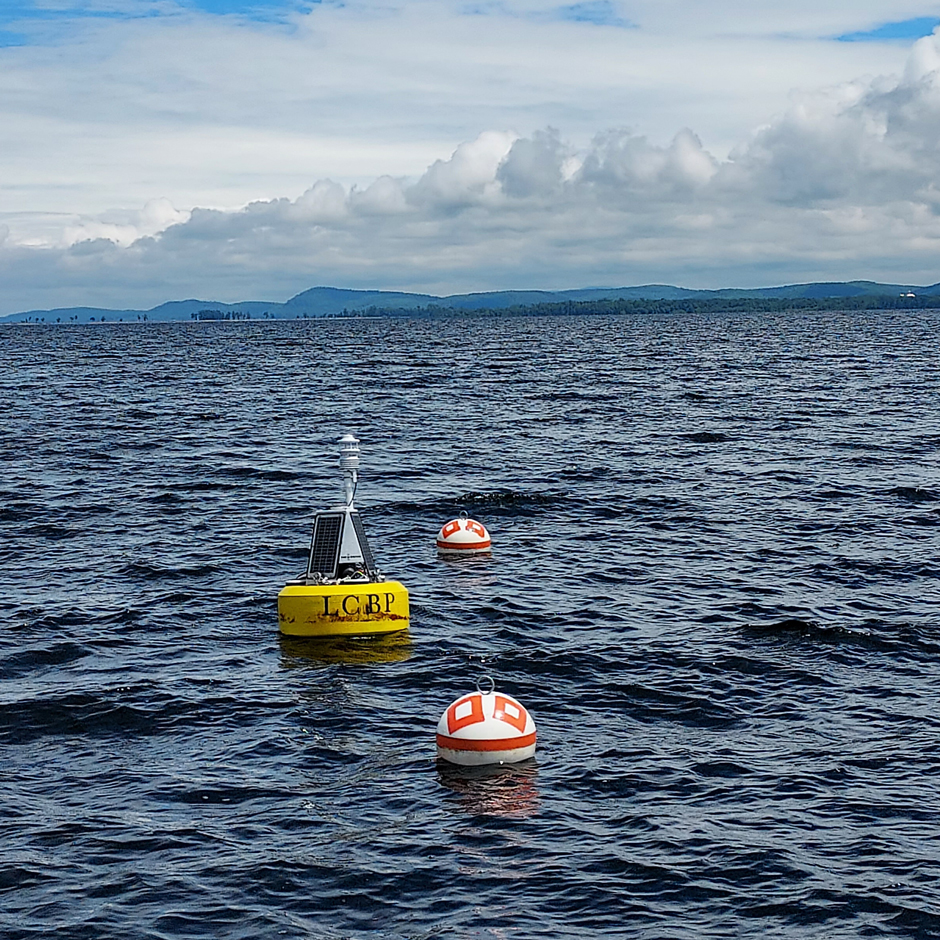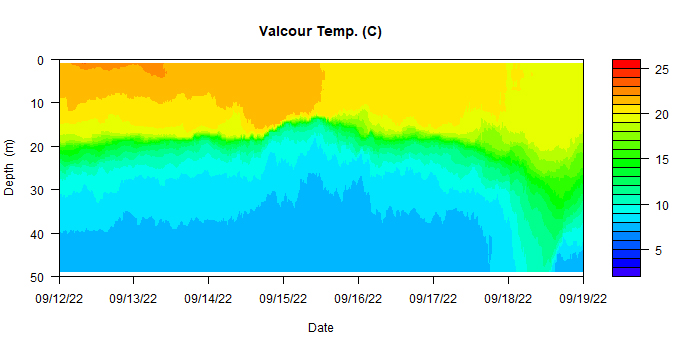Climate Change and Microplastics: Monitoring Lake Champlain
 Valcour research buoy on Lake Champlain. (Credit: Tim Mihuc / Lake Champlain Research Institute)
Valcour research buoy on Lake Champlain. (Credit: Tim Mihuc / Lake Champlain Research Institute)Most people go to Lake Champlain for its exceptional views and thrilling boating, but it’s also home to a wide variety of interesting aquatic research projects. From studying microplastics to thermal dynamics of the lake, Timothy Mihuc, director of the Lake Champlain Research Institute (LCRI) at the State University of New York at Plattsburgh (SUNY Plattsburgh), has spent his career studying aquatic ecosystems.
As an aquatic biologist, he’s the main investigator on Lake Champlain’s research studies while also managing their grants, employees, and their hands-on buoy work.
Over the years, LCRI has received a number of environmental grants that aid in its monitoring research. With those funds, they’ve bought multiple NexSens buoys for their research in Lake Champlain and the nearby rivers.
One of the most fascinating parts of Mihuc’s work is the technology that goes into it. “So it’s very interesting to be out on the boat with people and have them pull this buoy up on their smartphone,” states Mihuc.
“It’s fascinating to work with technology that basically, even 15 or 20 years ago, wasn’t really around, the ability to do that stuff didn’t exist,” states Mihuc.
Data from the long-term monitoring project also helps highlight the influence of road salt on rising salinity levels in Lake Champlain.
While these levels are relatively low, they have been doubling in recent years, compared to historical levels. Due to sodium and chloride being inert, the only way for them to rise is through the contributions of watersheds, roads, and rivers.
Although the salinity levels aren’t currently a problem in Lake Champlain, it’s important to identify the drivers of salinization as the great lakes and other basins are suffering due to rising chloride concentrations.
Finding and Studying Microplastics
One of LCRI’s newest research projects stems from finding microplastics in Lake Champlain. While net sampling, nurdles–small plastic pellets used to make most plastic products–were detected in the water column.
According to Mihuc, the presence of microplastics in the lake is particularly concerning because Lake Champlain is considered to be a very clean lake. Beyond that, Lake Champlain is a recreational lake known for its beauty and up until recently, was presumably untouched by microplastic contamination.
“To know that there’s plastic floating around in Lake Champlain–that’s probably been there for years and that you only detect if you sample water and then look at it–It was slightly disconcerting to know that that stuff’s floating around in the lake.”
LCRI is exploring the distribution of microplastics throughout the lake, tributaries, and beaches. Mihuc’s research seeks to answer very simply, ”Do we have plastics? If so, how are they distributed and where are they and where are the problems?”
After finding the microplastics in the lake, their study began this summer to try and characterize the microplastics currently found in Lake Champlain and, if they can, figure out the sources of the plastics. Using standard net sampling for the water and grid samples for beaches, they will count all samples and then divide them into categories.
After characterizing and numerating the plastics, they will look at their distribution in the lake to test what type they are, which will help identify the origin of the microplastics which can influence the health of aquatic life, possibly compromising the stability of the food chain.
Mihuc stresses, “It’s [microplastics] right there with the plankton, so it’s right there where things could get into the food web.”

Plankton net sampling on Lake Champlain. (Credit: Tim Mihuc / Lake Champlain Research Institute)
Studying Planktonic Communities
Studying the lake can be hard work, but as a researcher, Mihuc finds working with students one of the most rewarding parts of it all.
He explains, “The most fun thing about my job is to explore scientific questions, answer those questions or address them and then have students involved in that process.”
One of these research projects includes long-term plankton research on Lake Champlain’s planktonic communities. Mihuc has done a lot of work with plankton over the years and has just started including them in the long-term studies of the thermal structure of the lake. They’re looking specifically at the biological communities associated with the thermal structure and the biota responding to those changes.
“I’ve always been interested in aquatic communities, anything really, from invertebrates to fish, to other organisms,” states Mihuc.
He expands, “I have a current graduate student working on the impact of invasive species on vertical structure in the biota. And so we’re looking at g the vertical structure of the biota relative to the thermal structure, and then how that’s changing when a new species comes into the food web or into the system. And there are some interesting patterns going on there in terms of invasive species causing change among the native, natural communities.”
Invasive species get into the lake through canal systems or boat transfers, and two planktonic invaders–the spiny water flea and the fishhook water flea–were most likely from Lake Ontario boat transports or the Great Lakes where they were prior to invading.
Other invasive species in Lake Champlain include zebra mussel, alewives, and two recent planktonic invaders: the spiny water flea and the fishhook water flea. The intrusion of non-native species can disrupt the ecological chain, creating food scarcity for native zooplankton or the introduction of new predators.

LCRI buoy deployed on Lake Champlain in 2023. (Credit: Tim Mihuc / Lake Champlain Research Institute)
Thermal Dynamic Data Collection
Mihuc’s research requires a lot of data over a long period of time. LCRI currently uses up to three NexSens CB-450 data buoys on Lake Champlain, which provides versatile monitoring and includes the addition of a thermistor chain. They also use Lufft WS502 weather stations on the buoy and land-based systems.
Mihuc states, “We can get our data live in real time, which is, really, really amazing. We can see what’s going on in the lake and make a decision whether we need to go out and sample using that real-time, live data. And we also make that data available to the public.”
Mihuc continues, “Boaters want to use it because there’s a weather station on the buoy. Fishermen want to use it because we’re measuring the water temperatures throughout the water column.”
Thanks to the funding of several grants, LCRI recently bought a new NexSens CB-450 data buoy and upgraded their instrumentation to include an ADCP and wave sensor.
Their new research includes how thermal structure is changing in Lake Champlain. They’re looking specifically at storm and wind-driven events which are what can alter the thermal structure. The main operation is a 50-meter site with a NexSens TS210 temperature string all the way to the bottom.
Data from the thermistor is logged every 15 minutes. With years’ worth of temperature data, these massive datasets can help LCRI compare patterns in the lake system to examine how thermal regimes are changing and how that relates to storm events.
Due to climate change, the continental Northeast has seen a dramatic increase in storm events, both in severity and frequency.
Essentially, the warmer waters are getting pushed deeper by these storm events which impacts the lake’s thermal structure. During the summer, a normally stratified lake would be warm at the top and then cooler at the bottom. The biota orient themselves to the changes in temperature, and some need to be at the top, some at the bottom and some in the middle.
If the regimes are disrupted too much, the biota will have a difficult time responding and won’t be able to migrate to their preferred habitat temperature anymore. The thermal patterns they’re studying have large consequences to how the entire lake system functions.

Sept 19, 2022 | 7 day plot of thermal regime at Valcour Buoy. (Credit: Tim Mihuc / Lake Champlain Research Institute)
Conclusion
The goal of the project is to help LCRI highlight the impacts of climate change, specifically the influence of weather events, on Lake Champlain. If they gather enough data showing the impacts of climate change, it provides more information to local officials and environmental groups to use to actually start making decisions.
Mihuc explains, “I think at this point, we’re trying to figure out what’s going on. And then the hope is to fix it. With respect to the climate change issue, it’s clearly an issue that needs to happen worldwide, not just locally.”
Mihuc continues, “Essentially, it’s a human caused problem. So, we have data that will show what the impacts are on Lake Champlain and which will support the idea that maybe we should do the things we need to do to address climate change.”
Climate change isn’t the only problem that needs awareness; the rising salinity levels come from salting roads, the microplastics come from plastic waste, and invasive species usually invade by boat. Lake Champlain is one of many lakes facing these challenges and the data LCRI collects has the potential to shape research and management of other water bodies.




0 comments